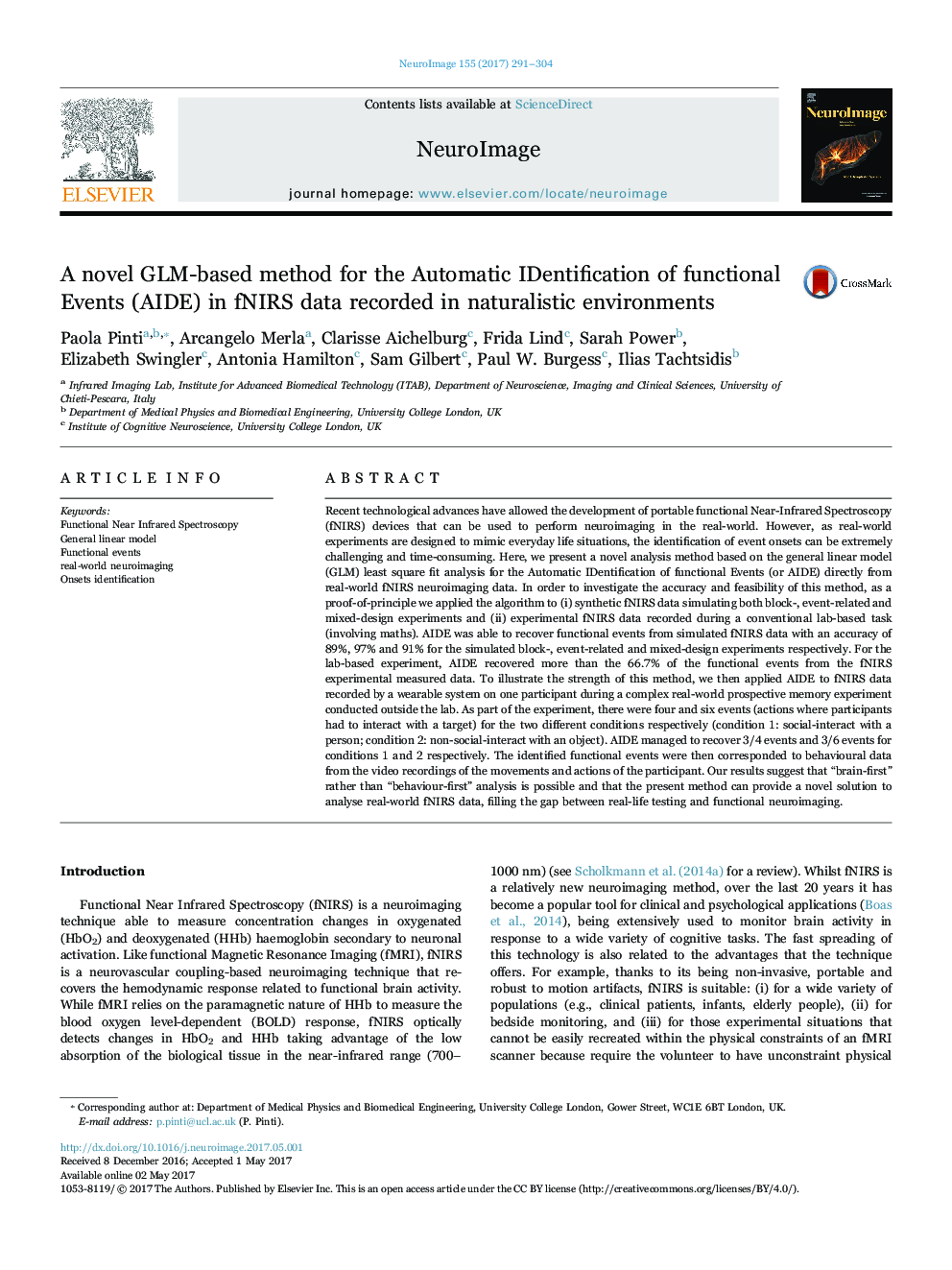| کد مقاله | کد نشریه | سال انتشار | مقاله انگلیسی | نسخه تمام متن |
|---|---|---|---|---|
| 5631139 | 1580855 | 2017 | 14 صفحه PDF | دانلود رایگان |

- A novel GLM-based method to recover the timing of functional events from fNIRS data.
- The method showed high specificity and sensitivity in synthetic and real data.
- The method is applied to fNIRS data conducted outdoor on a freely moving participant.
Recent technological advances have allowed the development of portable functional Near-Infrared Spectroscopy (fNIRS) devices that can be used to perform neuroimaging in the real-world. However, as real-world experiments are designed to mimic everyday life situations, the identification of event onsets can be extremely challenging and time-consuming. Here, we present a novel analysis method based on the general linear model (GLM) least square fit analysis for the Automatic IDentification of functional Events (or AIDE) directly from real-world fNIRS neuroimaging data. In order to investigate the accuracy and feasibility of this method, as a proof-of-principle we applied the algorithm to (i) synthetic fNIRS data simulating both block-, event-related and mixed-design experiments and (ii) experimental fNIRS data recorded during a conventional lab-based task (involving maths). AIDE was able to recover functional events from simulated fNIRS data with an accuracy of 89%, 97% and 91% for the simulated block-, event-related and mixed-design experiments respectively. For the lab-based experiment, AIDE recovered more than the 66.7% of the functional events from the fNIRS experimental measured data. To illustrate the strength of this method, we then applied AIDE to fNIRS data recorded by a wearable system on one participant during a complex real-world prospective memory experiment conducted outside the lab. As part of the experiment, there were four and six events (actions where participants had to interact with a target) for the two different conditions respectively (condition 1: social-interact with a person; condition 2: non-social-interact with an object). AIDE managed to recover 3/4 events and 3/6 events for conditions 1 and 2 respectively. The identified functional events were then corresponded to behavioural data from the video recordings of the movements and actions of the participant. Our results suggest that “brain-first” rather than “behaviour-first” analysis is possible and that the present method can provide a novel solution to analyse real-world fNIRS data, filling the gap between real-life testing and functional neuroimaging.
Journal: NeuroImage - Volume 155, 15 July 2017, Pages 291-304